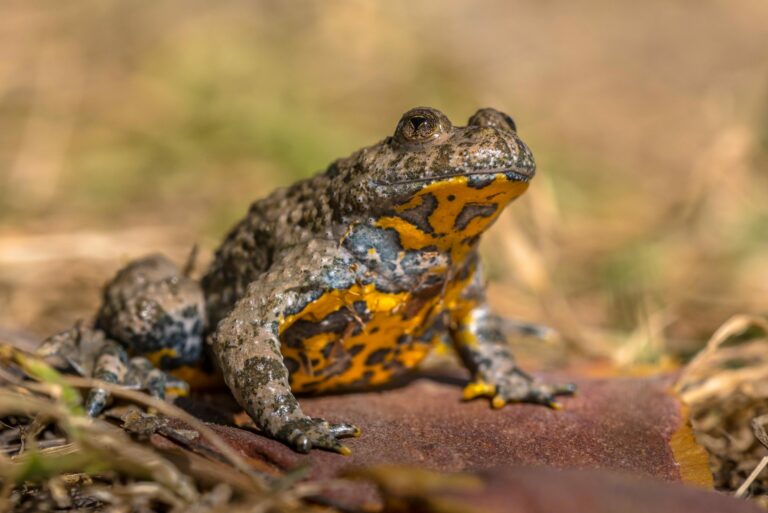Bombina variegata

The yellow-bellied toad, Bombina variegata, gets its name from the distinctive yellow to orange spots on its underside. The upper side of its body is gray-brown and covered in warts. It can reach a size of up to 5 cm (Schaefer 2018). This species uses stagnant small bodies of water such as puddles, pools, or water-filled ruts as breeding sites. Reproduction begins in May and can last until August. By October at the latest, the yellow-bellied toad moves onto land and seeks a place to hibernate. The main threats to this species are habitat loss and the destruction of breeding sites (Glandt 2018).
Diet: Bombina variegata primarily feeds on insects and their larvae, snails, spiders, and isopods (Glandt 2018).
Conservation status: The conservation status of the yellow-bellied toad is classified as “least concern” in Europe according to the IUCN Red List of Threatened Species, but populations are declining. This species is “protected” under the EU Habitats Directive (Annex II and IV) throughout Europe, and it is even “strictly protected” in Germany under the Federal Nature Conservation Act. The Red List of Germany lists the yellow-bellied toad as “critically endangered”.
-
Glandt, D (2018)Praxisleitfaden Amphibien- und Reptilienschutz. Schnell – präzise – hilfreich. Berlin, Heidelberg: Springer Berlin Heidelberg.
-
Schaefer, M (2018)Brohmer – Fauna von Deutschland. Ein Bestimmungsbuch unserer heimischen Tierwelt: Quelle & Meyer Verlag GmbH & Co.